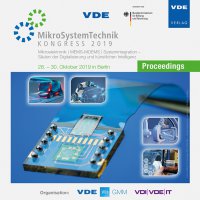Identification of critical stress location on PCBs taking into account the influence of fixations and housing
Konferenz: MikroSystemTechnik 2019 - Kongress
28.10.2019 - 30.10.2019 in Berlin, Deutschland
Tagungsband: MikroSystemTechnik 2019
Seiten: 4Sprache: EnglischTyp: PDF
Persönliche VDE-Mitglieder erhalten auf diesen Artikel 10% Rabatt
Autoren:
Pantou, Remi; Hildebrandt, Marcus; Dudek, Rainer; Rzepka, Sven (Fraunhofer ENAS, Technologie Campus 3, 09126 Chemnitz, Germany)
Inhalt:
High performance components are being built-in critical infrastructures (like computers for autonomous drive) that requires functional safety for an extended lifetime (15 years for automotive or even 30 for trains). In that extend, reliability testing of complete system boards is necessary, but the temperature ranges which yesterday were defining an accelerated test (temperature ranging from –40deg C to 150deg C) are today merrily covering the operative temperature of those new systems! Actual Automotive standards describe testing methodologies with extended temperature based on a pass/fail principle applied to each electronic components. However, those assumptions are not consistent when the system is assembled into its housing: as the CTE of the system board and the housing are usually different, a thermal mismatch can be observed during operation. Testing “free-standing” boards, cycling into an oven, is not picturing all the stresses applied to the system. It has been observed that cycling complete systems (Board + housing) leads to earlier failure of the system than observed when testing the board alone, the failure location may also be different [1]. Fixation screws and housing are playing a large role in the temperature and stress distribution over the board, potentially having a dominant contribution on the lifetime of the overall system. The board being usually attached into a case one can assume that the stress distribution will be different as the one observe during thermal test. In order to picture the stresses induced in such a complete system, Fraunhofer ENAS(exp (1)) is collaborating with FRT(exp (2)) and CWM(exp (3)) to define new characterization methodology combining a high resolution white light interferometer for out of plan measurements (warpage) and image correlation techniques for in-plane deformation. These two sensors attached to a high stiffness frame and combines with a newly designed, high volume, temperature chamber, allow for accurate measurement of complete systems including housing and fixation within a broad temperature range. Previous studies looked into this out-of-plane deformation problematic, but as they focus mainly on the warpage they could not account for all critical failures. In this attempt to address all observed failures, additional software tools were developed to allow the determination of derived quantities like strains, local curvatures and local warpage radius. This paper describe our approach for predicting critical locations on a system board taking into account external constrains and investigate the reason for earlier failure of the mounted system in comparison to the free standing boards. The reason of this early failure can be seen as a time dependent temperature mismatch due to the different thermal conductivities and heat capacities of the PCB and the cast aluminum housing. Finally, the method described in this paper has been found suitable to predict critical locations on a PCB taking into account the effect of screws, fixations, plugs and cables potentially constraining the system into its housing. We see potential for using this measurement of the local curvature to evaluate the local risk for sensitive components and give a feedback loop to designers even before their layout is finalise and the first costly prototype is produced.


